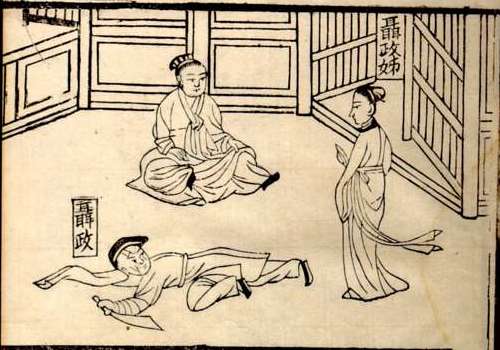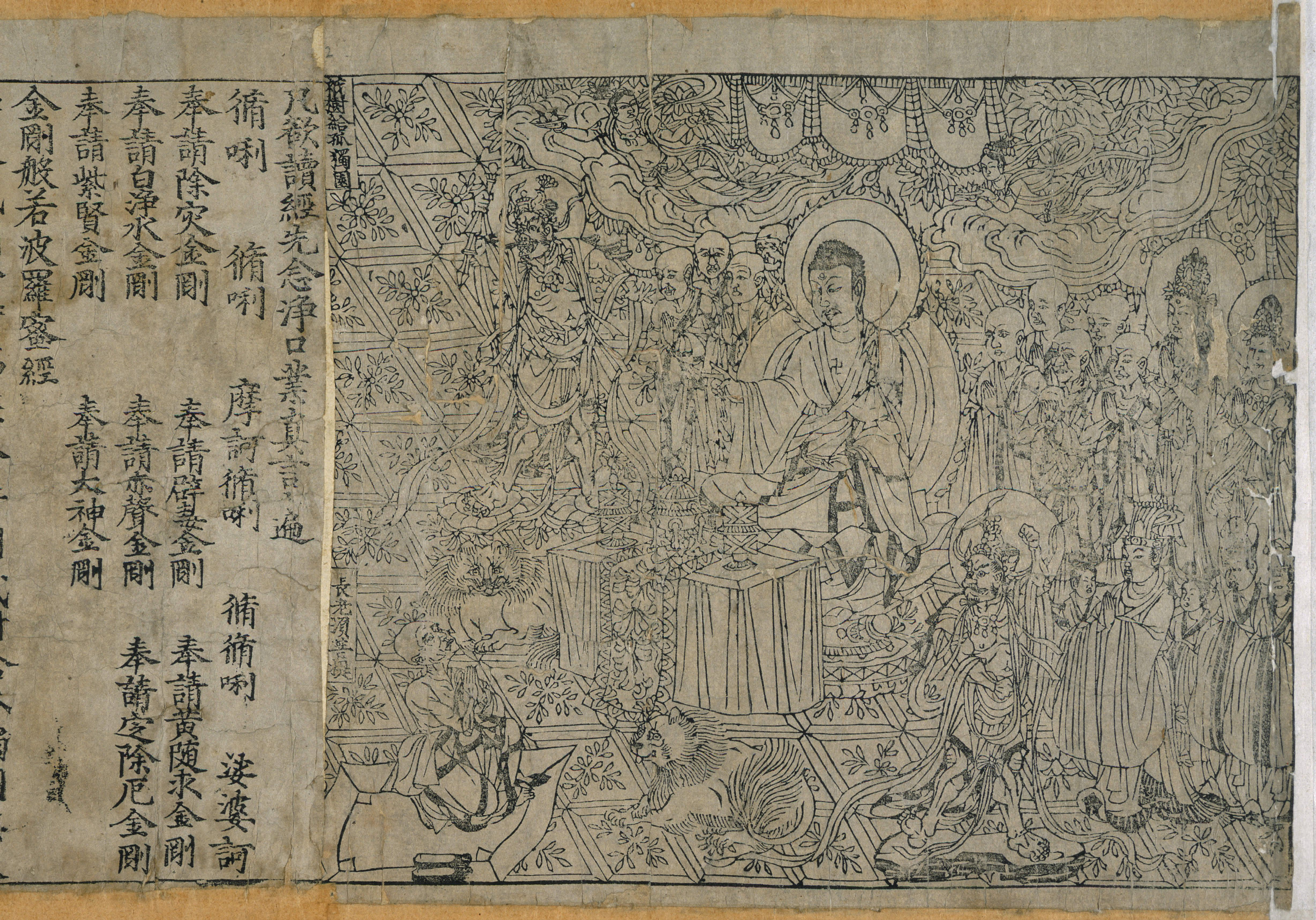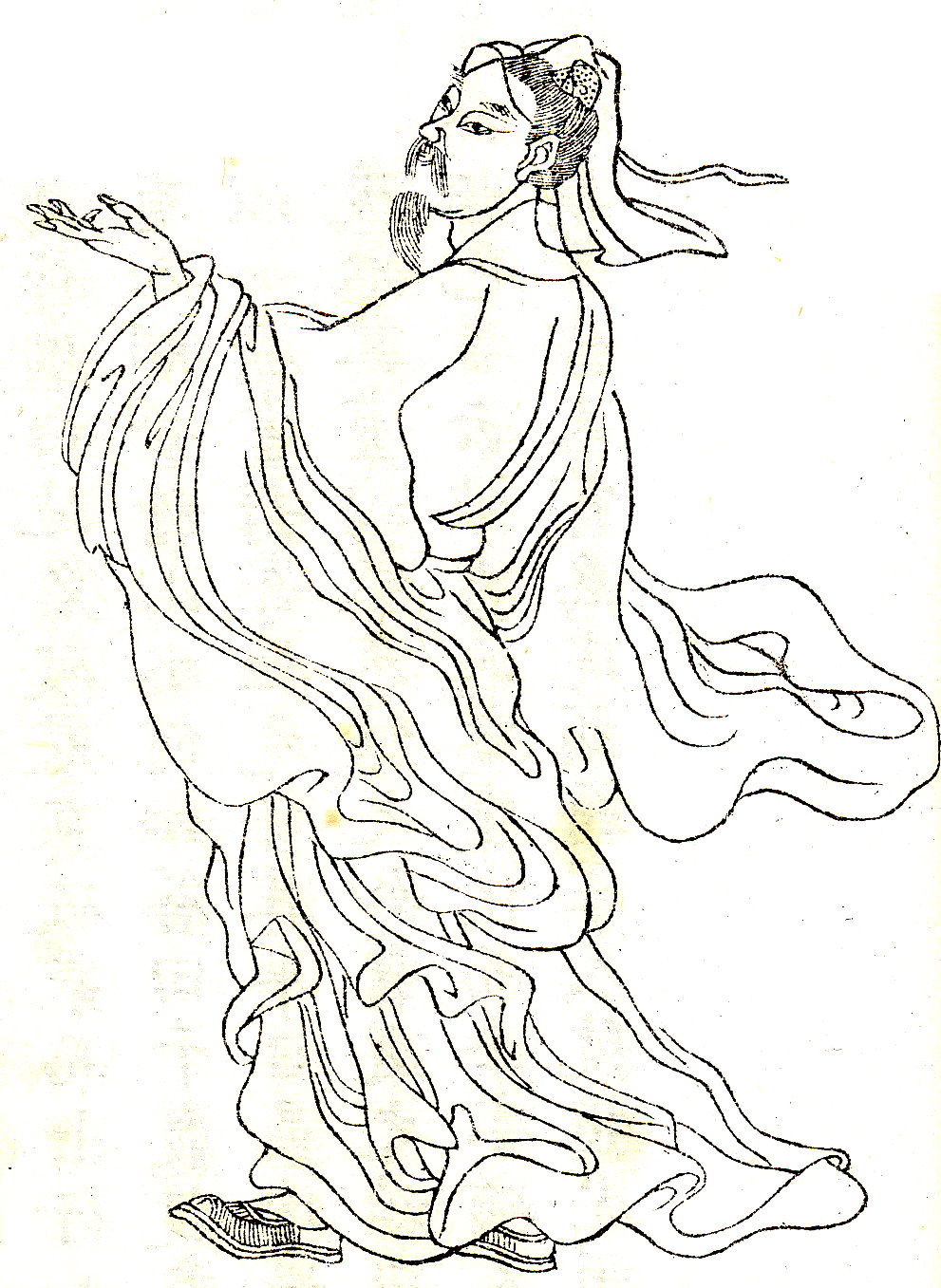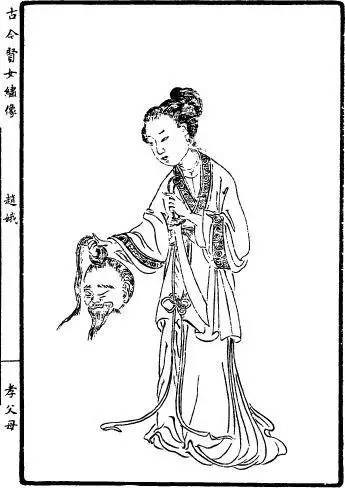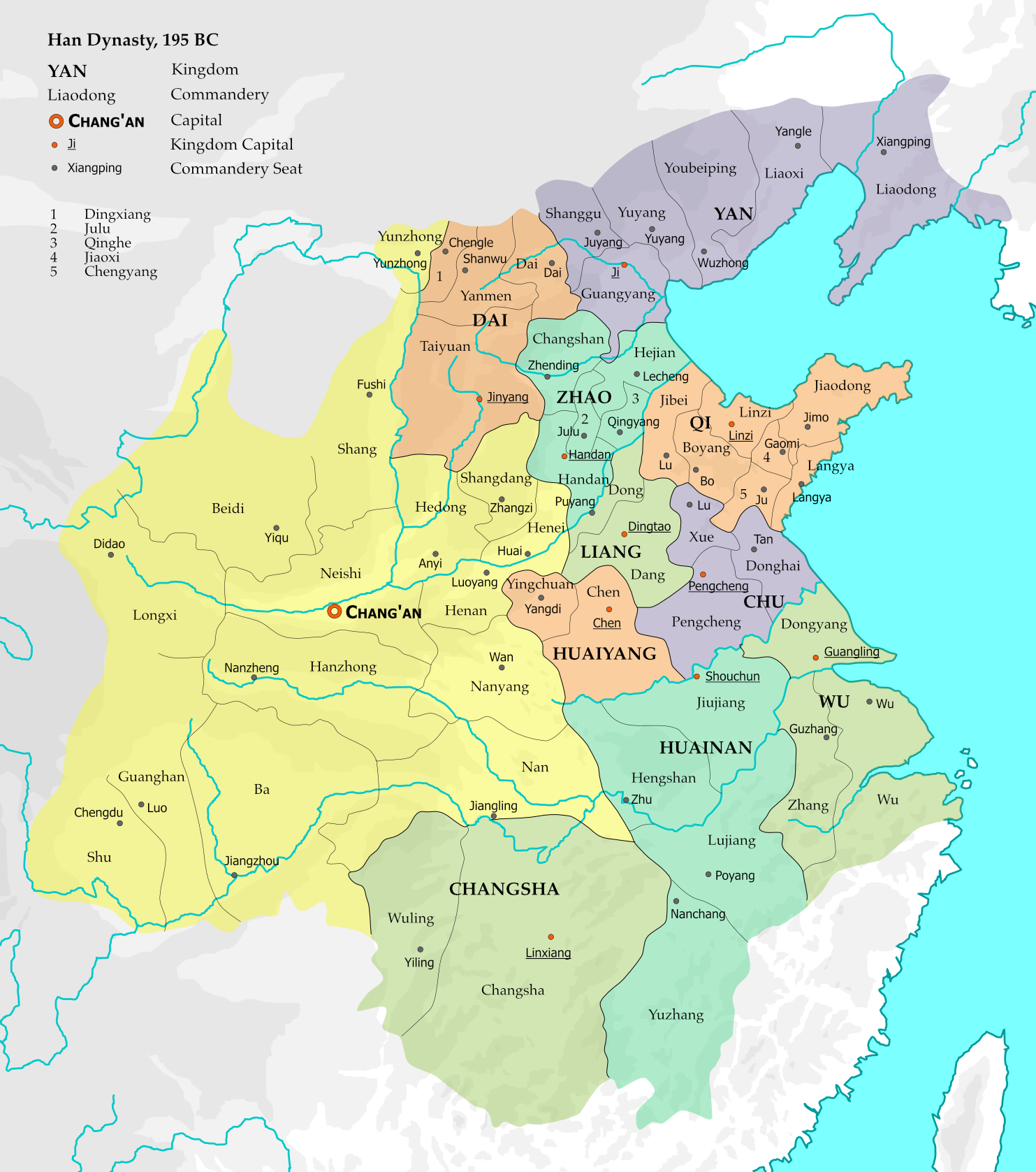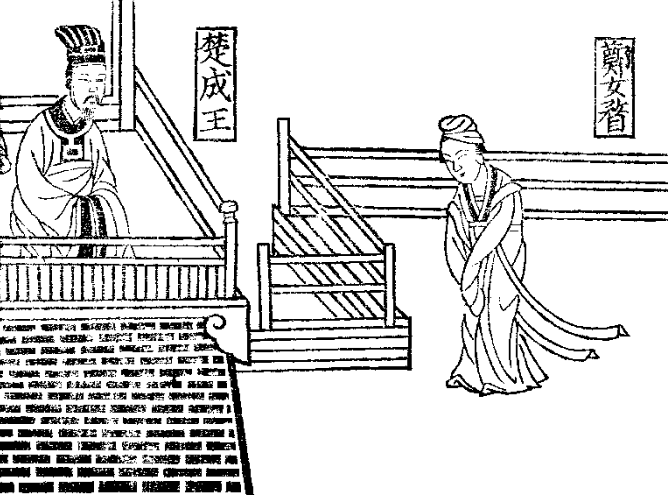|
Lienü Zhuan
The ''Biographies of Exemplary Women'' () is a book compiled by the Han dynasty scholar Liu Xiang c. 18 BCE. It includes 125 biographical accounts of exemplary women in ancient China, taken from early Chinese histories including '' Chunqiu'', '' Zuozhuan'', and the ''Records of the Grand Historian''. The book served as a standard Confucianist textbook for the moral education of women in traditional China for two millennia. Description The idealized biographies are divided into eight scrolls, including the eighth addendum from an unknown editor, as shown below. This book follows the ''lièzhuàn'' (列傳 "arrayed biographies") biographical format established by the Chinese historian Sima Qian. The word ''liènǚ'' (列女 "famous women in history") is sometimes understood as ''liènǚ'' (烈女 "women martyrs"), which Neo-Confucianists used to mean a "woman who commits suicide after her husband's death rather than remarry; woman who dies defending her honor." The online ... [...More Info...] [...Related Items...] OR: [Wikipedia] [Google] [Baidu] |
Woodblock Printing
Woodblock printing or block printing is a technique for printing text, images or patterns used widely throughout East Asia and originating in China in antiquity as a method of printing on textiles and later paper. Each page or image is created by carving a wooden block to leave only some areas and lines at the original level; it is these that are inked and show in the print, in a relief printing process. Carving the blocks is skilled and laborious work, but a large number of impressions can then be printed. As a method of printing on cloth, the earliest surviving examples from China date to before 220 AD. Woodblock printing existed in Tang China by the 7th century AD and remained the most common East Asian method of printing books and other texts, as well as images, until the 19th century. '' Ukiyo-e'' is the best-known type of Japanese woodblock art print. Most European uses of the technique for printing images on paper are covered by the art term woodcut, except for th ... [...More Info...] [...Related Items...] OR: [Wikipedia] [Google] [Baidu] |
Gu Kaizhi
Gu Kaizhi (; c. 344–406), courtesy name Changkang (), was a Chinese painter and politician. He was a celebrated painter of ancient China.Cihai: Page 1846. He was born in Wuxi and first painted at Nanjing in 364. In 366, he became an officer (Da Sima Canjun or Assistant to the Minister of Defense, 大司馬參軍). Later he was promoted to royal officer (Sanji Changshi or Gentleman in Waiting to the Emperor, 散騎常侍). He was also a talented poet and calligrapher. He wrote three books about painting theory: ''On Painting'' (), ''Introduction of Famous Paintings of Wei and Jin Dynasties'' () and ''Painting Yuntai Mountain'' (). He wrote: "In figure paintings the clothes and the appearances were not very important. The eyes were the spirit and the decisive factor."Cihai: Page 1846. Gu's art is known today through copies of several silk handscroll paintings attributed to him. Biography Gu Kaizhi was born in Wuxi (in modern Jiangsu) where his father served in the imperial ... [...More Info...] [...Related Items...] OR: [Wikipedia] [Google] [Baidu] |
Pang E
Pang E () or Zhao E () was a Chinese noble woman from the Eastern Han dynasty to the Three Kingdoms period. Born in Gansu province, she was the mother of the Cao Wei politician, Pang Yui. She murdered her family's killer before turning herself in. Her case was recorded in Huangfu's ''Biographies of Exemplary Women'' () which was supposed to be an instructional text for Confucian women. Due to her act of extreme bravery, she was immortalized as one of the memorable acts of courage and virtue performed by a woman in Chinese history. Zhao E was famous as one of the heroines depicted in the Wu Shuang Pu (無雙譜, Table of Peerless Heroes) by Jin Guliang. Life Zhao E was married to a member of the Pang family. In 179 AD her father, Zhao An, was killed by his fellow countryman Li Shou. Other members of the Zhao household took ill and died. She and her three younger brothers plotted to avenge him only for the latter three to die from the plague before they could take action, days lat ... [...More Info...] [...Related Items...] OR: [Wikipedia] [Google] [Baidu] |
Huangfu Mi
Huangfu Mi (215–282), courtesy name Shi'an (), was a Chinese physician, essayist, historian, poet, and writer who lived through the late Eastern Han dynasty, Three Kingdoms period and early Western Jin dynasty. He was born in a poor farming family in present-day Sanli village, Chaona, Pingliang, despite being a great-grandson of the famous general Huangfu Song, via Song's son Huangfu Shuxian. Notable works Between 256 and 260, toward the end of the state of Cao Wei, he compiled the ''Canon of Acupuncture and Moxibustion'' (), a collection of various texts on acupuncture written in earlier periods. This book in 12 volumes further divided into 128 chapters was one of the earliest systematic works on acupuncture and moxibustion, and it proved to be one of the most influential.''Chinese Acupuncture and Moxibustion'', 1987 Huangfu Mi also compiled ten books in a series called ''Records of Emperors and Kings'' (). He was also the coauthor of Biographies of Exemplary Women ( Ch ... [...More Info...] [...Related Items...] OR: [Wikipedia] [Google] [Baidu] |
King Zhao Of Chu
King Zhao of Chu (, died 489 BC) was from 515 to 489 BC the king of the State of Chu during the Spring and Autumn period of ancient China. He was born Xiong Zhen () and King Zhao was his posthumous title. Documents unearthed in the former state also show his title as King Shao ().Dong Shan (董珊) Excavated document: ''Posthumous names of the Chu kings –appendix to the Zuo Zhuan'', Archaeological Records Research Journal, Volume 2, Shanghai Fudan University Publishing, August 2008. King Zhao was the son of King Ping of Chu. Life In 506 BCE, King Helü of the State of Wu led an army to invade Chu. His army was commanded by the military strategist Sun Tzu, author of ''The Art of War'', as well as Wu Zixu, a Chu exile whose father and brother were killed by King Ping of Chu. The Wu army routed the Chu army at the historic Battle of Boju, and the Chu commander Nang Wa fled to the state of Zheng. The Wu army pursued the remaining Chu troops, won several more battles, and ca ... [...More Info...] [...Related Items...] OR: [Wikipedia] [Google] [Baidu] |
Bo Ying
Bo Ying () was a consort to the sixth-century BC Chu ruler, King Ping, and mother of his successor, King Zhao. Biography Bo Ying was a daughter of the ruler of Qin. The ''Biographies of Exemplary Women'' states that Bo Ying's father was Duke Mu of Qin, but he reigned nearly 100 years earlier than her husband King Ping of Chu, so it is generally accepted that she was a daughter of Duke Ai. The '' Zuo zhuan'' and ''Shiji'' record that she was betrothed to the heir of Chu, but the official who negotiated her marriage, Fei Wuji, persuaded the Chu king to marry her himself. Bo Ying married the king on her arrival in Chu and later gave birth to a son named Xiong Zhen. Bo Ying's marriage is one of very few between Chu and Qin state to have been recorded. Bo Ying's son became king of Chu in 516 BCE. In 506, Helu of Wu captured the Chu capital, and Bo Ying's son fled with a younger sister. The ''Biographies of Exemplary Women'' records that Helu attempted to rape Bo Ying and o ... [...More Info...] [...Related Items...] OR: [Wikipedia] [Google] [Baidu] |
Empress Ma (Han Dynasty)
Empress Ma (馬皇后, personal name unknown) (late 30s – August 16, 79), formally Empress Mingde (明德皇后, literally, "the understanding and virtuous empress"), was an empress during the Eastern Han Dynasty from 8 April 60According to Emperor Ming's biography in ''Book of the Later Han'', Lady Ma was made empress on the ''jiazi'' day of the 2nd month of the 3rd year of the ''Yongping'' era of his reign. This corresponds to 8 Apr 60 in the Julian calendar. (永平三年二月)甲子,立贵人马氏为皇后.) ''Houhanshu'', vol.02 until 75, then empress dowager from that year till her death. Her husband was Emperor Ming of Han. Family background and marriage to Crown Prince Zhuang In 40, the eventual Empress Ma was born to Emperor Guangwu's General Ma Yuan, known for his expeditions against Vietnamese rebellions and his exhortations on personal living, and his wife Lady Lin (藺夫人). Ma was a marquess, and Lady Ma was therefore born into comfort and wealth, as a ... [...More Info...] [...Related Items...] OR: [Wikipedia] [Google] [Baidu] |
Western Han
The Han dynasty (, ; ) was an Dynasties in Chinese history, imperial dynasty of China (202 BC – 9 AD, 25–220 AD), established by Emperor Gaozu of Han, Liu Bang (Emperor Gao) and ruled by the House of Liu. The dynasty was preceded by the short-lived Qin dynasty (221–207 BC) and a warring interregnum known as the ChuHan contention (206–202 BC), and it was succeeded by the Three Kingdoms period (220–280 AD). The dynasty was briefly interrupted by the Xin dynasty (9–23 AD) established by usurping regent Wang Mang, and is thus separated into two periods—the #Western Han, Western Han (202 BC – 9 AD) and the #Eastern Han, Eastern Han (25–220 AD). Spanning over four centuries, the Han dynasty is considered a golden age (metaphor), golden age in Chinese history, and it has influenced the identity of the History of China, Chinese civilization ever since. Modern China's majority ethnic group refers to themselves as the "Han Chinese, Han people", the Sinitic langu ... [...More Info...] [...Related Items...] OR: [Wikipedia] [Google] [Baidu] |
Empress Wang (Ping)
Empress Wang (王皇后, personal name unknown) (8 BC – 23 AD), formally Empress Xiaoping (孝平皇后), formally during her father Wang Mang's Xin dynasty Duchess Dowager of Ding'an (定安太后) then Princess Huanghuang (黃皇室主), was an empress during the Han Dynasty and the last empress of the Western Han Dynasty. She was the daughter of the eventual usurper Wang Mang, who established the Xin Dynasty. Her husband was Emperor Ping. She is largely viewed by historians as a tragic figure, the victim of circumstances who tried to remain loyal to her husband of only a few years, but whose faithfulness to her husband's dynasty eventually led her to commit suicide at the end of her father's reign. Family background Empress Wang was born in 8 BC, to Wang Mang and his wife Lady Wang, the daughter of Wang Xian (王咸) the Marquess of Yichun. By the time of her birth, her father had resigned from his powerful position as commander of the armed forces, which he held ... [...More Info...] [...Related Items...] OR: [Wikipedia] [Google] [Baidu] |
Empress Zhao Feiyan
Zhao Feiyan (, ? – 1 BC),Peterson, Barbara Bennett & He Hong Fei & Han Tie & Wang Jiyu & Zhang Guangyu. (1999) ''Notable Women of China'' "M.E. Sharpe". pp. 87–90. . formally Empress Xiaocheng (孝成皇后), was an empress during the Han Dynasty. Her husband was Emperor Cheng. She was known in the Chinese popular mindset more for her beauty than for the palace intrigue that she and her sister, the also beautiful Consort Zhao Hede engaged in, but unlike most of the famous beauties in Chinese history (such as the Four Beauties), she was often vilified by her own sisters. She was often compared and contrasted with Yang Guifei, the beautiful concubine of Emperor Xuanzong of Tang, because she was known for her slender build while Yang was known for her full build. This led to the Chinese idiom ''huanfei yanshou'' (環肥燕瘦, literally "plump Huan, slender Fei"), which describes the range of the types of beauties, later also used as a figurative expression on literary styles t ... [...More Info...] [...Related Items...] OR: [Wikipedia] [Google] [Baidu] |
Consort Ban
Consort Ban (c. 48 BCE – c. 2 BCE), or Ban Jieyu (), also known as Lady Ban (Pan), was a Chinese scholar and poet during the Western Han Dynasty (206 BCE – 23 CE). ''Jieyu'' (婕妤) was a title for a third-rank palace lady, one rank below the ''Zhaoyi'' and two ranks below the Empresss. Her personal name is not known. Life Consort Ban started as a junior maid, became a concubine of Emperor Chengdi and quickly rose to prominence at court. She had two sons with him, but both died in infancy. Once she declined an invitation to ride in a palanquin because she feared to distract him from matters of state. She was also renowned as a great scholar, able to recite poems from the ''Shi Jing'' and a lot of other texts. Because neither the Empress Xu nor Consort Ban produced him an heir, the Empress Dowager Wang Zhengjun encouraged him to take more concubines. Around 19 BCE, however, Emperor Cheng took a liking to the dancing girl Zhao Feiyan and her sister Zhao Hede. They were bo ... [...More Info...] [...Related Items...] OR: [Wikipedia] [Google] [Baidu] |
Zheng Mao
Zheng Mao () was the primary wife of King Cheng of the State of Chu during the Spring and Autumn period of ancient China. She is one of 125 women whose biographies are included in the '' Biographies of Exemplary Women'', written by Liu Xiang. Life Zheng Mao was born to the Ying clan from the state of Zheng, which had fallen into decline after the death of Duke Zhuang. She was sent with the primary wife as a concubine for King Cheng of Chu (ruled. 671–626 BC). After she arrived at the Chu palace, the king looked down on the women's quarters and noticed her not looking up no matter what he offered her. He then made her his principal wife. Both she and his chief minister cautioned against the appointment of his son Shangchen as crown prince. After the king ignored the advice, Shangchen caused the downfall of the minister. After this, the King wanted to appoint a younger son as heir apparent instead, but now Zheng Mao advised against this, predicting civil war. Believing the k ... [...More Info...] [...Related Items...] OR: [Wikipedia] [Google] [Baidu] |
